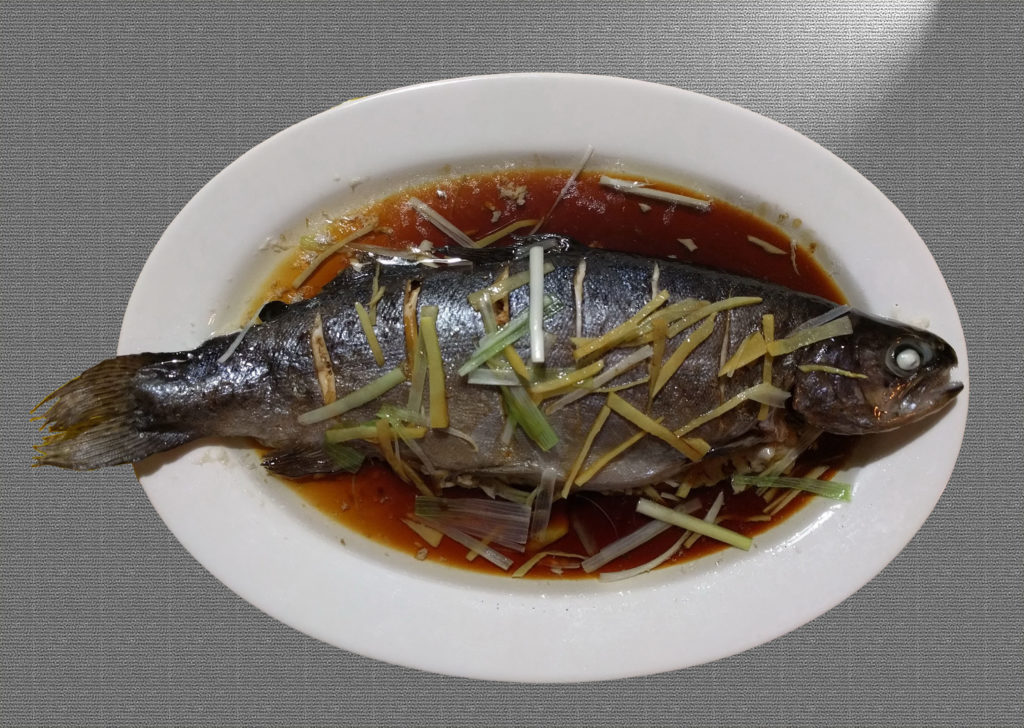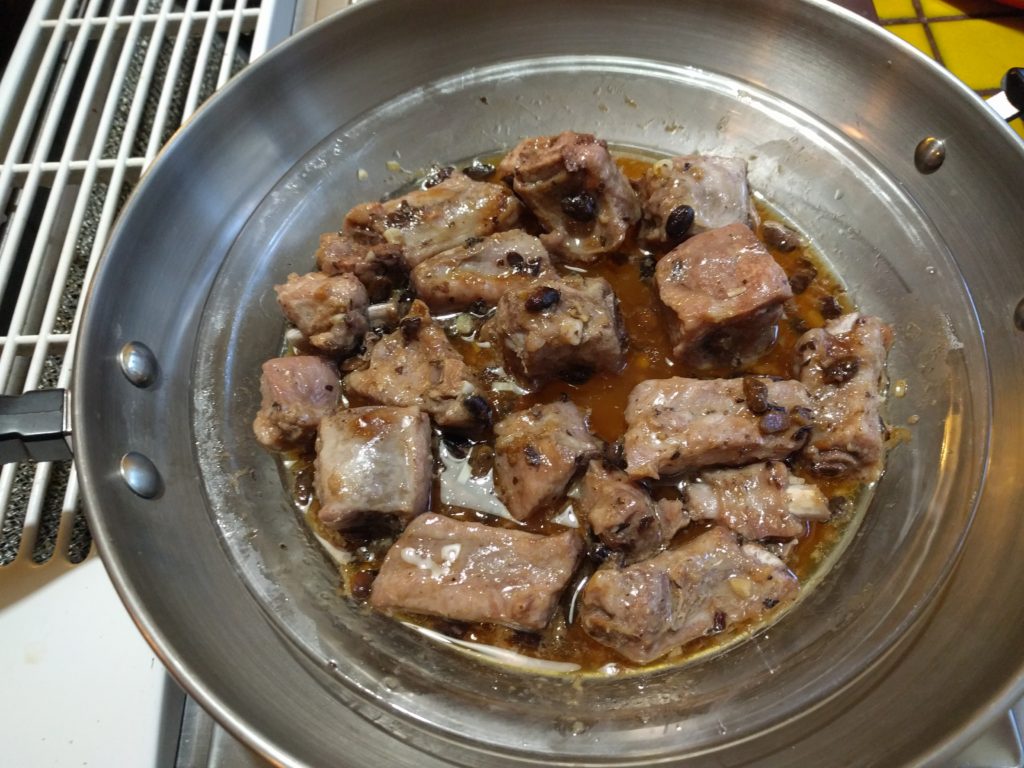
Steamed whole fish is the epitome of Cantonese cooking. A perfectly steamed fish has flesh that is just cooked at the bone, moist and not dry (a 1 lb. rainbow trout is pictured above). Typically, whole fish are not served with the liquid in which it was steamed, which is fishy tasting, and any sauce is added at the end, after the fish has been cooked. In this classic preparation, the fish is topped with scallions and ginger, then doused with hot oil, which releases the flavor of the aromatics into the flesh of the fish.
INGREDIENTS
1 to 1.5 lb. whole fish (such as rock fish, rainbow trout, tilapia, etc.), cleaned with head and tail intact
2 by 1/2-inch piece fresh ginger, peeled and finely julienned
1/4 cup light soy sauce
1 tablespoon rice wine (or sake)
1 scallion, white and light green parts only, julienned
1/2 cup canola (or avocado) oil — hot, about 400°F
PREPARATION
1. Rinse the fish in cold water and pat dry with paper towels. Score the fish. Place the fish on a heatproof plate that is both large enough to accommodate it (e.g., a 9″ glass pie plate in wok, or 12″ fish plate in microwave), bending the fish slightly if it is too long. Stuff half of the ginger inside the cavity of the fish and spread the remaining ginger on top of the fish.
2. Pour water into a wok and set a steamer in the wok. Make sure the water does not touch the bottom of the steamer. Bring the water to a boil over high heat. Place the plate holding the fish in the steamer, cover, and steam for about 8 minutes, until the fish flakes easily when tested with the tip of a knife.
3. Alternatively, microwave the fish for about 3.5 minutes (1300 watt microwave); under a “dome” to retain moisture.
4. While the fish is cooking, in a small bowl, stir together the soy sauce, wine, and 1 tablespoon of water. Set aside.
5. When the fish is ready, carefully remove the plate from the steamer and pour off any accumulated liquid. Lay the scallion along the top of the fish.
6. Also, while the fish is cooking: In a small sauté pan, heat the oil over high heat until it is very hot but not smoking (~400°). Remove the oil from the heat and pour it directly over the fish and scallion. The oil should sizzle and pop.
7. Drizzle soy mixture over the fish and serve immediately. (The mixture should also be heated, for best result).
8. Reserve some scallion (and optionally cilantro) to garnish, as a final touch.
How to Prepare a Whole Fish
Most markets sell fish that have already been scaled and gutted. If a fish has not been cleaned, you can ask the fishmonger to clean and gut it for you. Fins can also be trimmed off because the fish is easier to serve without them. With a pair of scissors, cut off the fins from both sides of the fish, from the belly, and then the dorsal fins (the ones running along the back). Finally, trim the tail by cutting it into a V shape and score the fish.
Adapted from Ling Chen, and Vietnamese Home Cooking by Charles Phan.

